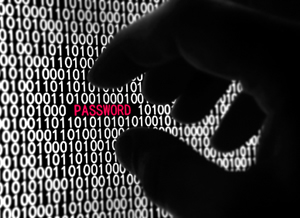Booz Allen Hamilton

Top Ten Cybersecurity Trends for Financial Services in 2012
 Booz Allen Hamilton, a consulting firm serving federal, nonprofit and commercial clients, recently had this report on the top ten financial services cybersecurity trends for 2012:
Booz Allen Hamilton, a consulting firm serving federal, nonprofit and commercial clients, recently had this report on the top ten financial services cybersecurity trends for 2012:
- The exponential growth of mobile devices drives an exponential growth in security risks. Every new smart phone, tablet or other mobile device, opens another window for a cyber attack, as each creates another vulnerable access point to networks.
- Increased C-suite targeting. Senior executives are no longer invisible online. Firms should assume that hackers already have a complete profile of their executive suite and the junior staff members who have access to them.
- Growing use of social media will contribute to personal cyber threats. A profile or comment on a social media platform—even by the CEO’s son or sister—can help hackers build an information portfolio that could be used for a future attack.
- Your company is already infected, and you’ll have to learn to live with it—under control. Security should remain a priority, but today’s risks and threats are so widespread that it will become impossible to have complete protection—the focus of cybersecurity tactics increasingly must be to analyze, detect and expunge threats inside your system.
- Everything physical can be digital. The written notes on a piece of paper, the report binder and even the pictures on the wall can be copied in digital format and gleaned for the tools to allow a hacktivist-type of security violation, and increasingly this will be a problem.
- More firms will use cloud computing. The significant cost savings and efficiencies of cloud computing are compelling companies to migrate to the cloud. A well designed architecture and operational security planning will enable organizations to effectively manage the risks of cloud computing.
- Global systemic risk will include cyber risk. As banks and investment firms continue on the path to globalization, they will become increasingly inter-connected. A security breach at one firm can create negative ripple effects that greatly impact systemic risk in financial markets.
- Zero-day malware (malicious software) and organized attacks will continue to increase. Like a vicious, insidious virus that mutates, the tools of cyber criminals adapt and change constantly, rendering the latest defenses useless. Firms need to be prepared to adapt quickly as well to zero-day malware and the tactics of organized crime and foreign adversaries that are increasingly used today.
- Insider threats are real. The accidental insider breach will continue to be the primary source of compromise for the Advanced Persistent Threat (APT) and other attacks. Organizations need to focus on security awareness training and internal monitoring to detect intentional and accidental insider access.
- Increased regulatory scrutiny. Recently, the Securities and Exchange Commission introduced guidelines that require companies to report incidents that result, or could possibly result in, cyber theft or a risk of compromised data considered material.

